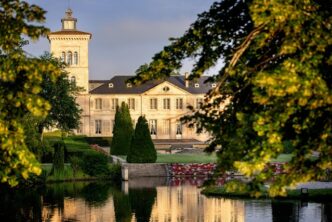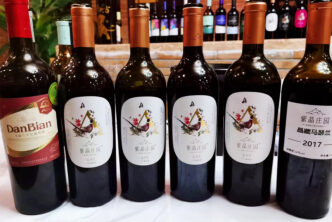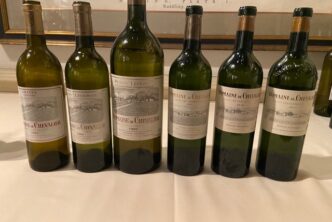你知道吗,在路易斯安那州肯纳市有一条叫做 Château Palmer Drive的街道?这是真实存在的(邮政编码是70065,以防你想查一下):事实上,肯纳市的这段特别的街道还有其他以著名的波尔酒庄命名的街道,包括Châteaux Margaux和并不存在的Château Petrus(后者的真实名字仅为Petrus)。无论如何,在大西洋的另一边有一条以Château Palmer命名的街道是宝玛酒庄多年来在世界各地获得声誉的象征。
宝玛酒庄不仅是波尔多最美丽的酒庄之一,也是这个产区最好的葡萄酒之一,在1855波尔多列级庄中位列三级庄,但今天每个人都承认它是最好的超二级列级庄之一(也许是命运使然,我必须指出,事实上1855年也是肯纳市建立的年份)。最重要的是,宝玛酒庄拥有400年的历史,仅有4位拥有者,这在频繁易主的梅多克(Médoc)产区的酒庄之中是十分罕见的,仅这一点就足以骄傲自豪。
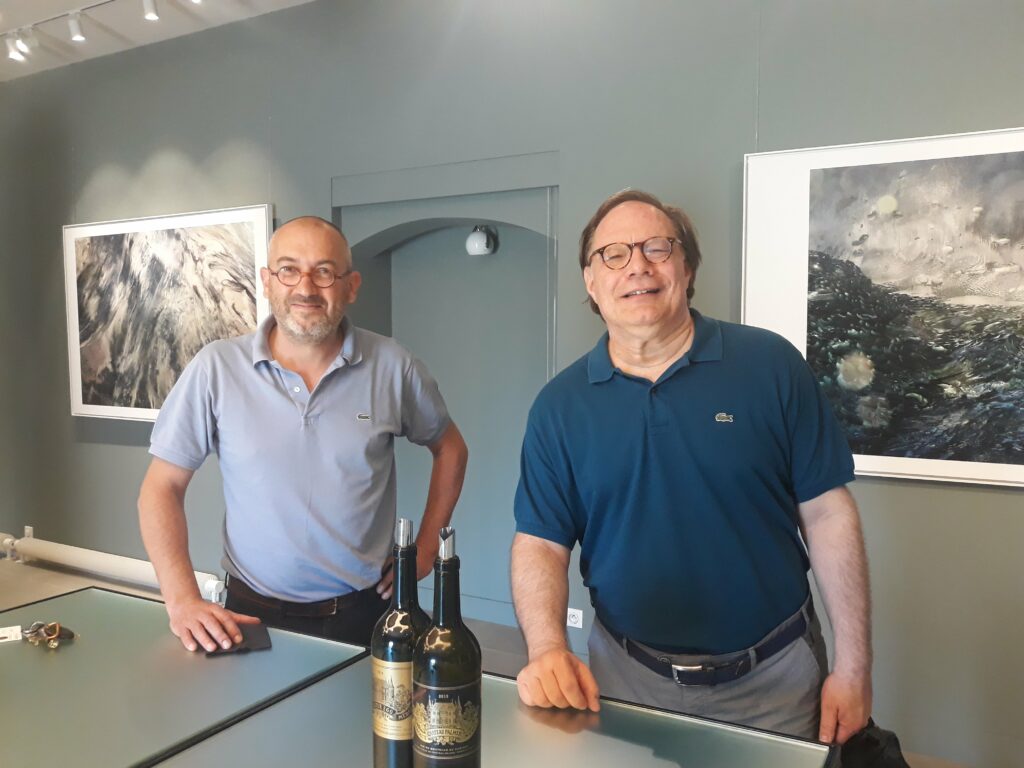
imgSpider 采集中…
一点历史…
宝马酒庄的历史可追溯到17世纪,酒庄建立之初的葡萄树原本属于更大的迪仙酒庄Château d ‘Issan。在19世纪,它名为Château de Gasq,实际上是Marie Brunet de Ferrière,一个年轻的寡妇,被称为de Gascq女士,她以10万法国法郎的价格把这个酒庄卖给了一个人,而正是这个人让宝玛酒庄出名,并将自己的冠名了酒庄。显然,英国陆军上校查尔斯·宝玛Charles Palmer(后来成为少将)是一位军官同时也是为绅士,在一次长途旅行中,得以和这位美丽女士共同乘坐马车,之后便买下了这座酒庄。他接管了庄园,并在接下来的30年里不断扩张(在他可靠的当地代表格雷先生的帮助下,他将庄园的公顷面积扩大了两倍),同时也在英国葡萄酒市场占据一席之地(宝玛的红葡萄酒在那里的声誉极高)。1853年6月,Péreire兄弟买下了这个酒庄,他们是富有的银行家,不仅投入巨资改善酒庄,还建造了非常漂亮的多角楼,新文艺复兴时期风格的城堡(完工于1854年,只花了一年时间!)。然后,在1938年,该酒庄被四个富有的波尔多家族买下,他们的产业中也包括葡萄酒商和经销商,他们是:基尼斯特(Ginestet)、米耶赫(Miailhe)、马勒-贝斯(Mahler-Besse)和西切尔(Sichel)家族。如今,宝玛酒庄有22个股东,其中绝大多数都属于最初1938年买下酒庄的四个家族中的两家:马勒-贝斯和西切尔家族(在不同的时间点,米耶赫家族将股票卖给了西切尔和马勒-贝斯,基尼斯特家族出售股权给马勒-贝斯)。
2004年,年仅32岁的Thomas Duroux被任命为宝玛酒庄的技术总监,接替了曾监督该酒庄葡萄酒生产已有42年的Jean Bouteiller。毫无疑问,在Duroux的带领下,宝玛酒庄进入了最优质葡萄酒之列,他已经在托斯卡纳(Tuscan)标杆性的酒庄奥纳亚酒庄(Ornellaia)中证明过这一点了。尽管我们需要认识到,宝玛酒庄是有着悠久出产优秀葡萄酒名声的(传说中的1961年,宝玛酒庄如果不是最好的波尔多葡萄酒,也肯定能排前三名),但毫无疑问,在过去的十五年里酒庄拥有着一连串非常出色的年份而声名显赫。
宝玛酒庄和它的风土
宝玛酒庄占地约一百公顷,其中六十五公顷种植了葡萄,细分成一百二十二个小地块,分布在坎蒂纳克Cantenac、迪仙 Issan 和玛歌Margaux三个村子。酒庄从2008年起开始转换为生物动力法种植,但尽管一开始的结果让团队感到困惑,但他们一直坚持了下去,最终在2014年整个酒庄全部完成了生物动力法的转换,并在2017年获得认证。
宝玛酒庄位于吉隆河Gironde左岸的玛歌产区,其风土条件相当复杂。玛歌产区以美丽的砾石丘(croupes)为特色,这是自第四纪以来经过数千年侵蚀的古代冲积阶地的遗迹。这种砾石土有两个特点,排水良好和有机质含量低,但砾石土之间也有许多细微差别,并不是所有的砾石都是一样的。砾石层的深度可以有很大变化,下层土壤可以包括不同百分比的石灰石,粘土,沙土和泥沙土,再加上玛瑙状和吕底亚石。砾石土壤的类型和深度的不同,对土壤的特性起着非常重要的作用,导致波尔多的风土、尤其是玛歌风土的不同,因为地理基土的不同最终酿制出的葡萄酒也非常不同(而所有其他的风土因素,帮助创造了非常多样性的葡萄酒,同时也保持了产区内明确的相似之处)。例如,玛歌-肯特纳克Margaux-Cantenac 高原(宝玛酒庄的一大部分葡萄园就位于此)的特点是来自比利牛斯山和中央高原山脉的加伦河 Garonne 和多尔多涅河Dordogne 冲积形成的圆的石头居多(通常来说比梅多克北边的砾石山脉的石头要小一些)。但位于酒庄后面的宝玛高原的沙土不多,而肯特纳克高原的沙土却很多,这就造就了两种截然不同的土壤(因此也就造就了不同的葡萄酒)。宝玛的赤霞珠大部分种植在更南部的迪仙的葡萄园里,那里的砾石更为引人注目,而粘土则不那么丰富。无论如何,在宝玛,他们已经将18个不同类型的砾石土分类,证实了该地区这种特殊土壤类型的复杂性。
显然砾石土壤最适合种植赤霞珠,但宝玛酒庄本身有别于其他左岸酒庄,因为这里一直种植着高比例的梅洛(宝玛酒庄葡萄园种植着46%梅洛,46%赤霞珠和6%小味而多,事实上宝玛酒庄的许多年份的葡萄酒都是梅洛为主的混酿,这在波尔多左岸几乎是闻所未闻的)。要了解宝玛葡萄酒的伟大和独特之处,最基本的关键之一显然是梅洛,它不仅是非常老的老藤梅洛,而且是种植在非常特殊的地块。总的来说,宝玛葡萄园中种植梅洛的地块不仅是最好的葡萄园(这在以赤霞珠为主的左岸产区已经是一种很奇怪的现象),而且比通常用于种植梅洛的葡萄园土壤中的砾石比例更高。粘土中较高的砾石使梅洛葡萄酒更加优雅,这无疑是宝玛葡萄酒神秘感和品质的核心原因之一。最后但同样重要的是,酒庄也经历了许多现代化和升级,现在拥有了不是一个而是两个酒窖(实际上,还有第三个小的实验酒窖)和42个温度控制的不锈钢大桶,这些大桶可以允许逐个地块酿酒。
酒庄不仅仅只生产著名的宝玛酒庄葡萄酒,还生产其他葡萄酒,比如:另一个我Alter Ego,19世纪历史特酿Historical XIXth Century Wine,还有一款极其稀有的白葡萄酒,称为宝玛酒庄白葡萄酒Blanc de Palmer,以及一款更稀有的麦秆酒Vin de Paille。
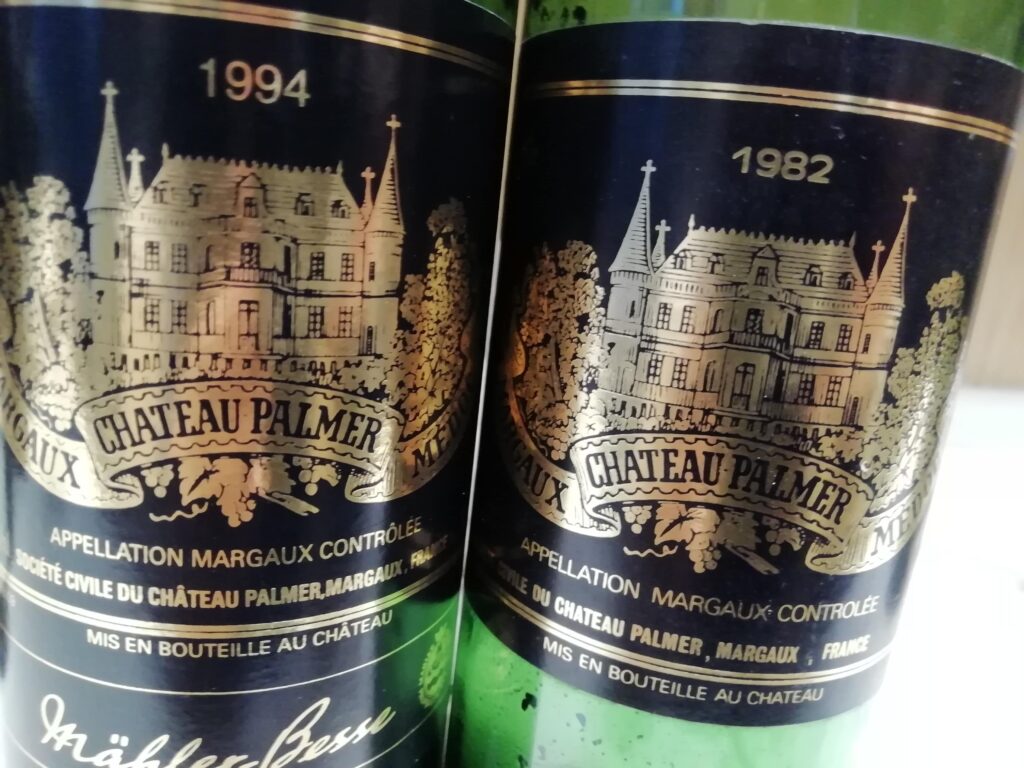
imgSpider 采集中…
另一个我:并不是副牌酒
“另一个我”不是副牌酒,而是另一款酒。每一款酒都用自己的方式呈现了宝玛酒庄及其风土的形象。“另一个我”在它年轻的时候更加开放,但这不是一个被迫选择的风格,只是用来酿造宝玛葡萄酒的葡萄种植在比“另一个我”葡萄更高粘土含量的砾石土壤上。“另一个我”是一款风格更为温和的葡萄酒,在较低的温度下发酵,以保存果香(“另一个我”的发酵时间通常为两周,宝玛葡萄酒的发酵时间为三周),在陈酿过程中使用的橡木桶也较少:不同于宝玛葡萄酒(根据年份不同,陈酿时间在18 – 24个月,使用70%左右的新的法国橡木桶),“另一个我”也是在法国橡木桶中陈酿(25%至40%的新桶)16到18个月,也需要一个相对更早的适饮窗口(最好享用的时间是8至15年)。Thomas Duroux总结得很好:“如果这两种葡萄酒是一幅画,那么“另一个我”就是对同一幅风景更现代的诠释。”宝玛酒庄曾经确实酿造过副牌酒,名为将军珍藏La Réserve du Général,当时整个酒庄产量的10%没有被用来酿制宝玛葡萄酒的葡萄都用来酿制这款副牌酒。将军珍藏的生产于1997年停止,现在这“剩余”的10%则作为散装葡萄酒出售(其余90%的葡萄酒则平分给宝玛葡萄酒和“另一个我”,根据年份不同,每一款葡萄酒产量约8000 – 10000箱/年;通常是8000箱/年的“另一个我”和10000箱/年的宝玛葡萄酒)。
宝玛的其他葡萄酒
2004年,在一位加利福尼亚收藏家的慷慨帮助下,Thomas Duroux品尝了一款1869年的宝玛葡萄酒,是一款被“埃米塔日化 hermitagé”的葡萄酒(换句话说,就是把埃米塔日的葡萄酒加到酒里,这在当时是很常见的做法),他决定也要做一款类似的葡萄酒。宝玛的“历史混酿”就这样诞生了(加入了10-20%埃米塔日产区的西拉)。宝玛每年还会生产约2000瓶的白葡萄酒,首次生产于2007年,简简单单地叫做“宝玛白葡萄酒Blanc de Palmer”。酒庄可以使用已经种植的5个不同的白葡萄品种:长相思,灰长相思,赛美蓉,密斯卡岱, 露泽(Lauzet是一种罕见的比利牛斯山葡萄酒产区的本地葡萄,它并不被波尔多法定产区认可,而在瑞朗松Jurancon法定产区被认可,所以它出售时标的是法国餐酒Vin de France而不是波尔多白葡萄酒Bordeaux Blanc)。这款酒非常难找到,但没有什么能与宝玛麦秆酒Vin de Paille的稀缺性可比;可以肯定的说,这些年来,我个人听到的关于尼斯湖水怪的回忆要比我听到的关于这款酒的回忆多得多。
此次品鉴的葡萄酒大多是2020年12月在上海由知味TasteSpirit组织的宝玛酒庄垂直品鉴大师班上品鉴的,由Thomas Duroux(通过网络)和我(在上海知味举办活动的俱乐部里进行)共同主持。为了完整起见,品酒报告中还添加了最近(过去几个月)在其他场合品鉴过的宝玛酒庄其他几款葡萄酒的评价,其中包括一些宝玛酒庄历史上的重要年份。
品酒词
2015 Alter Ego de Palmer Margaux 94
Vibrant ruby-red. Red fruit, thyme, tar cedar and blue fruit plus a hint of spicy mushrooms on the very pretty, expressive nose. Quite rich and fleshy for Alter Ego, with real density to the expressive blue and red fruit flavours. Closes youthfully chewy on the graphite-and truffle-accented long back end; I loved this wine’s noteworthy, very pure inner-mouth perfume and precision. The grapes used to make Alter Ego grow on lighter gravel soils that have more sand and less clay than on those where grapes used to make Palmer grow. A 52% Merlot, 42% Cabernet Sauvignon and 6% Petit Verdot blend, I believe this is the best Alter Ego ever made. Hail in spring reduced crop loads, then a warm and dry summer and very fine harvest weather made for an outstanding growing season overall, and the wines have generally turned out excellent. This Alter Ego is a case in point. Drinking window: 2023-2030
2015 Chateau Palmer Margaux 98
Good full deep ruby. Violet, black cherry, blueberry, licorice and thyme on the enticing nose. Enters very pure and juicy, then rich and deep on the middle, with a polished tannic spine nicely framing the blue and red fruit flavours that are extended by harmonious acidity on the long back end. An extremely suave, seamless wine that shows just the faintest trace of alcohol-derived heat with aeration, but I’m really splitting hairs here. This 50% Merlot, 44% Cabernet Sauvignon and 6% Petit Verdot blend is a simply exceptional red wine and an extremely refined version of Palmer; and that’s saying something considering the numerous extremely elegant wines this estate has made over the year. Drinking window: 2026-2055
2011 Chateau Palmer Margaux 94
Opaque ruby-red. Deep aromas of cassis, chocolate, coffee and truffle, complicated by a mineral edge. Then very concentrated and sweet, with remarkable flavour intensity of its blue fruit and cocoa flavours. Finishes very long and downright silky, quite a feat in hot and dry 2011. Following on the heels of two monstrously good, century-like vintages such as 2009 and 2010, 2011 is an average quality vintage, given that it was a difficult year that was hot and dry already come springtime. Consequently, the growth cycle started early and the harvest was early as well. Unfortunately, many if not most of the area’s wines (top names included) show gritty tannins (but not Palmer, that managed the year’s weather conditions brilliantly). The year was made that much more difficult at Palmer because of a hail storm that hit June 4, reducing crop load by 50%. All told, this 54% Merlot, 40% Cabernet Sauvignon and 6% Petit Verdot blend is a remarkably successful wine for the estate. Well done. Drinking window: 2024-2050.
2010 Chateau Palmer Margaux 97
Fully saturated ruby. The captivating nose offers deep aromas of blue fruit, spices and truffle. Then rich, dense and multilayered, with flavours similar to the aromas enlivened by a noteworthy flinty presence. The perfumed aftertaste lingers long. Smooth as silk, the 2010 Chateau Palmer boasts the estate’s trademark suave texture and is so well-balanced you will never guess, tasting blind, that the wine actually has 14.5% alcohol. Just like the 2011, this is a 54% Merlot, 40% Cabernet Sauvignon and 6% Petit Verdot blend. Drinking window: 2025-2055.
2008 Chateau Palmer Margaux 98
Deep ruby-red. Enticingly pure aromas of blackcurrant, blueberry, graphite, cedar, and violet are complemented by strokes of graphite and cedar. Clean and extremely focused on entry, with pure flavours of blue fruit and minerals nicely extended in the middle and on the nobly polished close. An utterly beautiful, extremely well-balanced wine, the 2008 is more about refinement and balance than power; the finish lasts and lasts, and so will your memories of this wine. On this day, the 2008 Palmer (a 51% Merlot, 41% Cabernet Sauvignon and 8% Petit Verdot blend) was the surprise wine of the tasting, easily besting many wines from more famous vintages. Make no mistake about this, this is a simply exceptional red wine: I was one of the few wine writers at the time of the Primeurs to write clearly (in my Bordeaux Primeurs report for Stephen Tanzer’s International Wine Cellar) that the 2008 red Bordeaux vintage was being heavily underestimated by everyone and that the wines were much better than expected, but even I am surprised by just how well the 2008 Palmer has turned out. Do what you can to stock your cellar up with it. Drinking window: now-2050.
2005 Chateau Palmer Margaux 96
Dark ruby-red with a hint of a pale rim. Ripe aromas of blackberry jam, sweet spices and field herbs, with a candied violet undertone. Rich dense and sweet, with very ripe flavours similar to the aromas, this finishes youthfully chewy and long. A very showy Palmer that speak clearly of the hot solar 2005 vintage (as Thomas Duroux aptly put it “It’s an exuberant wine”), this is a slightly less elegant Palmer than most, but what it lacks in refinement it makes up for with really juicy hedonistic lusciousness. It’s also an a Cabernet Sauvignon-dominated blend of Palmer (the 2005 is a 53% Cabernet Sauvignon, 40% Merlot, and 7% Petit Verdot blend), something that is more likely to happen at the property in hot vintages like 2005 because Cabernet Sauvignon keeps its freshness despite the heat while Merlot tends to become overripe and exaggerated in its aroma and flavour profile. The 2005 vintage, a memorable one in Bordeaux annals, was the first year Duroux was present at the property from beginning to end. Drinking window: now-2050.
1999 Chateau Palmer Margaux 94
Deep ruby with a hint of garnet at the rim. Sweet herb, cocoa and almond skin nuances to the expressive, evolved blue fruit aromas. This very full-bodied, is by Palmer’s normal standards, an almost massive red boasting lovely richness. Finishes long with spicy notes and an earthy complexity. A 48% Cabernet Sauvignon, 46% Merlot, and 4% Petit Verdot blend, the 1999 Chateau palmer has always been an atypically powerful wine for the vintage, exceptionally concentrated and tactile but never over the top. Best of all, it is well-balanced and reasonably smooth despite its tactile, mouthcoating palate presence. Drinking window: now-2034.
1994 Chateau Palmer Margaux 90
Good medium ruby. Fragrant aromas of black cherry, faded violet, orange peel and minerals, plus a touch of graphite and cedar. Juicy and gripping, but still relatively fruity, with substantial building tannins that confer a slightly aggressive quality due to a lack of fruity fleshiness. Nicely persistent on the herb-accented aftertaste. The 1994 Chateau Palmer is 50% Cabernet Sauvignon, 47% Merlot, 2% Cabernet Franc and 1% Petit Verdot blend. The lightest wine in this tasting, but also one of the most fragrant, the 1994 is universally considered a weak vintage that, just like 1993 before it, was also marred by heavy September rainfall. Despite its so-so vintage pedigree, the 1994 Palmer is drinking well and will no doubt afford pleasure for a few more years still. Drinking window: now-2025.
1989 Chateau Palmer Margaux 96
Luminous medium red-ruby. Delightfully open nose, with hints of ripe blue and black fruit, smoked meat, potpourri and sweet spices. The dark fruit, wild herb, coffee and cocoa flavours boast compelling sweetness and intensity, and melt-in-your-mouth tannins that provide an important architectural framework for the rich ripe soft fruit present. Then beautifully floral on the precisely chiseled and very long, suave finish. A hot, sunny year, characterized by beautiful and warm weather in June, July and August, that led to the earliest harvest ever at Palmer (at the time), but the wine has turned out magnificently. As in almost all the hot vintages, Palmer tends to have a bit more Cabernet Sauvignon in the blend than is usual: the 1989 Chateau Palmer is a 52% Cabernet Sauvignon, 41% Merlot, 6% Petit Verdot and 1% Cabernet Franc. Drinking window: now-2040
1982 Chateau Palmer Margaux 95
Medium red-ruby with a hint of garnet at the rim. Lovely floral lift contributes precision to the ripe aromas of blackberry, violet, milk chocolate and licorice. Sweet but sharply delineated, velvety, even opulent, but not thick or over the top with the multi-layered ripe dark fruit, mineral and graphite flavours that linger nicely on the backwardly tannic finish. The nicely persistent aftertaste speaks of red and blue fruits, Sichuan pepper, candied violets, and licorice is smooth and complex. A really superb wine, the 1982 has always been considered one of the great Palmers: it’s a blend of 48% Cabernet Sauvignon, 42% Merlot, 7% Cabernet Franc and 3% Petit Verdot. Drinking window: now-2032
1975 Chateau Palmer Margaux 97
![]()
imgSpider 采集中…
Good full red with ruby highlights and a pale rim. Blackcurrant, violet, mint, and graphite on the nose, complicated by enticing notes of grilled porcini, licorice and tobacco. Juicy, spicy and nicely ripe, with still explosive inner-mouth perfume and superb intensity to the botanical black and red fruit, mineral-accented flavours. A really classic red Bordeaux wine built to age, with no easy-going sweetness but showcasing outstanding balance to its powerful tannic structure that has helped guarantee a long and slow evolution in bottle. Extremely long on the close, with still plenty of ripe fruit to buffer the firm tannic spine. This is a real knockout! Another Cabernet Sauvignon-dominated wine, the 1975 Chateau Palmer is a 47% Cabernet Sauvignon, 40% Merlot, 8% Petit Verdot and 5% Cabernet Franc blend that has aged remarkably well (as is in fact typical of all the best wines from this tannin-loaded vintage, while lesser wines, even from top estates, are marred by tough tannins and a lack of fruit) and still has plenty of life ahead. An absolutely knockout wine, it is, without any doubt whatsoever, one of the most successful, well-balanced and polished red Bordeaux wines I have tasted from the 1975 vintage. Drinking window: now-2032.

 English
English
